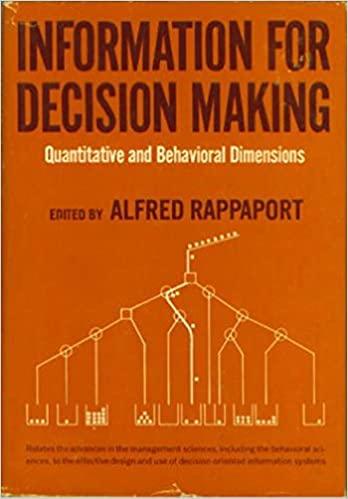Margin Analysis & Cannibalization
for a college class

Raul Ortega has just inherited "Ortega's Stop and Shop," a small convenience store on the south side of Chicago. The store is small, even by convenience store standards, with an interior of 15' wide and 30 deep (plus a small amount of storage space in the back). Raul inherited the store from Uncle Jose, who passed away unexpectedly and did not have any children. Since Raul was his favorite nephew, Jose re- wrote his will to leave the store to Raul in hopes that he would keep it going. Raul worked in Ortega's during the summers when he was in high school and college, but he mostly just ran the cash register, re-stocked shelves, cleaned, and listened to Uncle Jose talk about the store, the neighborhood, and life. But now that Raul suddenly owns the store, he has many decisions to make that he has never made before. One of the biggest decisions is ordering products from suppliers. Raul has spent his nights going through what Uncle Jose had been ordering, and he has figured out the following: 1. Beer and wine are bought through two local distributors, and the store has a gross margin of 40% on these items. 2. Uncle Jose was buying all his soft drinks and bottled water from local Coke and Pepsi distributors - these distributors also handle less popular but noteworthy brands such as 7-Up, Dr. Pepper, Deja Blue, Aquafina, etc. The gross margin on bottled soft drinks is 50%. Uncle Jose also had fountain service through the Coke distributor, who supplies the fountain drink equipmer free-fountain drinks have a gross margin of 80%. 3. The food, tobacco, and other non-perishable items are all purchased at a cash-and-carry wholesaler that's also on the south side. Raul plans to look at this mix of items going forward, as he's guessing that some of the items don't sell as well as others; however, for now, he'll keep this product mix where it currently is until he has time to adjust it. The gross margin on these items is 40%. One of five sections of the cooler was set aside by Uncle Jose for selling soft drinks and juice drinks that are popular in Mexico. This section includes many brands unfamiliar to US consumers, such as Sidral Mundet. Jarritos, Jumex, and Goya. In looking at the sales records, Raul notices that these brands have been declining in sales for several years, until they now collectively account for only 10% of the sales that are generated by the Coke and Pepsi bottled products sold in the store. In 2019, Ortega's Stop and Shop sold $3,000 of Mexican soft drinks/juices (40% gross margin) that occupied one cooler section, compared to $20,000 of Coke and Pepsi distributed product that also occupy one cooler unit. Raul thinks the reason for the decline of these Mexican brands is the changing demographics of the neighborhood surrounding Ortega's. When it opened in 1981, the neighborhood surrounding Ortega's was around 50% Mexican-American, 40% African-American, and the remaining 10% being white. The most recent census data indicates the neighborhood is more diverse, including individuals that are African-American (down to 25%), Cuban (10%), Haitian (5%), Somali (5%), Mexican (down to 20%), and an increase in whites (35%), which signals coming gentrification for the neighborhood. One of the product categories Uncle Jose chose not to carry were energy drinks. The gross margin % on energy drinks is usually lower than bottled soft drinks; however, the gross margin dollar per unit is usually better. A 16 oz bottle of Coke normally sells at Ortega's for $1.69. With a gross margin of 50%, the store is buying each bottle for $0.845 while also making $0.845 in gross margin per bottle. By comparison, a can of Red Bull typically sells for $3.49 and costs $2.09, for a gross margin of 40.1% but generates $1.40 of margin dollars for every can of Red Bull The question is: Which four brands should Raul carry? Ortega's has cooler space to stock four different brandstof energy drinks, and you need to select the four brands that will make the most sense for Ortega's. Brand Cost (units per case) Cannibalization Rate? Selling price per unit (per can) Price of other items bought in Ortega's (40% margin) Estimated Demand per Month (cans) 120 30 60 95 120 Monster Xycience Nos Red Bull Kickstarter Bang Amp Rockstar $2.99 $3.49 $2.99 $3.49 $2.39 $2.99 $2.99 $2.49 $21.50/case (12 cans) $36/case (12) $41.50 (24) $50.20/case (24) $14.04/case (12) $22/case (12) $28/case (12) $32/case (24) 35% 10% 15% 25% 60% 15% 50% 40% $1.75 $0.50 $0.45 $1.00 $1.50 $0.25 $1.40 $1.75 20 30 You will need to either include a spreadsheet (put the brands in the rows, Just like in the table above). When the term "brand" is used, we are referring to one brand with multiple variations. For example, Red Bull is a brand, but if Red Bull was selected, the store would stock Red Bull Original, Red Bull Sugar Free, Red Bull Plum Twist, etc. Cannibalization refers to the percent of a product's sales volume that is drawn from existing bottled soft drinks sold by Ortega's. For example, if an energy drink will sell 200 units and has a 30% cannibalization rate. It means that by selling those 200 energy drinks, you are reducing the number of soft drinks to be sold by 60 units









